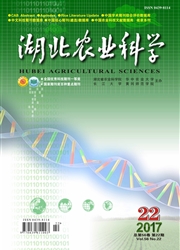

 中文摘要:
中文摘要:
以曹妃甸新区为例,提出了基于生态服务价值的土地利用空间优化方法,运用RS与GIS技术,采用最小积累阻力模型,模拟曹妃甸新区生态保护用地和城乡建设用地扩张过程,合理的划分土地空间分布格局并提出各区域的管制要求。结果表明,曹妃甸新区生态系统服务价值整体上由北向南分异明显,呈现中、高、低分布趋势。区域可分为重点保护区、一般保护区、适宜建设区、优化建设区,面积分别为214.39、809.42、499.11、424.91 km^2,结果突出了生态系统服务价值的空间差异,完善了土地空间优化方法 。
 英文摘要:
英文摘要:
In order to better coordinate the contradiction between economic development and ecological protection,taking Caofeidian new district as an example, using RS and GIS technology, the paper presents the partition method of land space based on ecosystem service value. We used the minimum resistance model to simulate the expansion process of urban construction land and ecological protection land and predicted the reasonable land spatial distribution pattern and the regional regulatory requirements. The results showed that:the ecosystem service value of Caofeidian New District showed obvious differentiation from north to south with high,medium and low distribution. The total area could be divided into four parts:Key protected zone, general protection region, construction-suitable zone and construction optimized zone. The area was 214. 39,809.42,499.11,424.91 km^2, respectively. The results highlight the spatial differences in ecosystem service valueand improved the land space partition method, which was significant for the sustainable land use in Caofeidian new district.
 同期刊论文项目
同期刊论文项目
 同项目期刊论文
同项目期刊论文
 期刊信息
期刊信息
